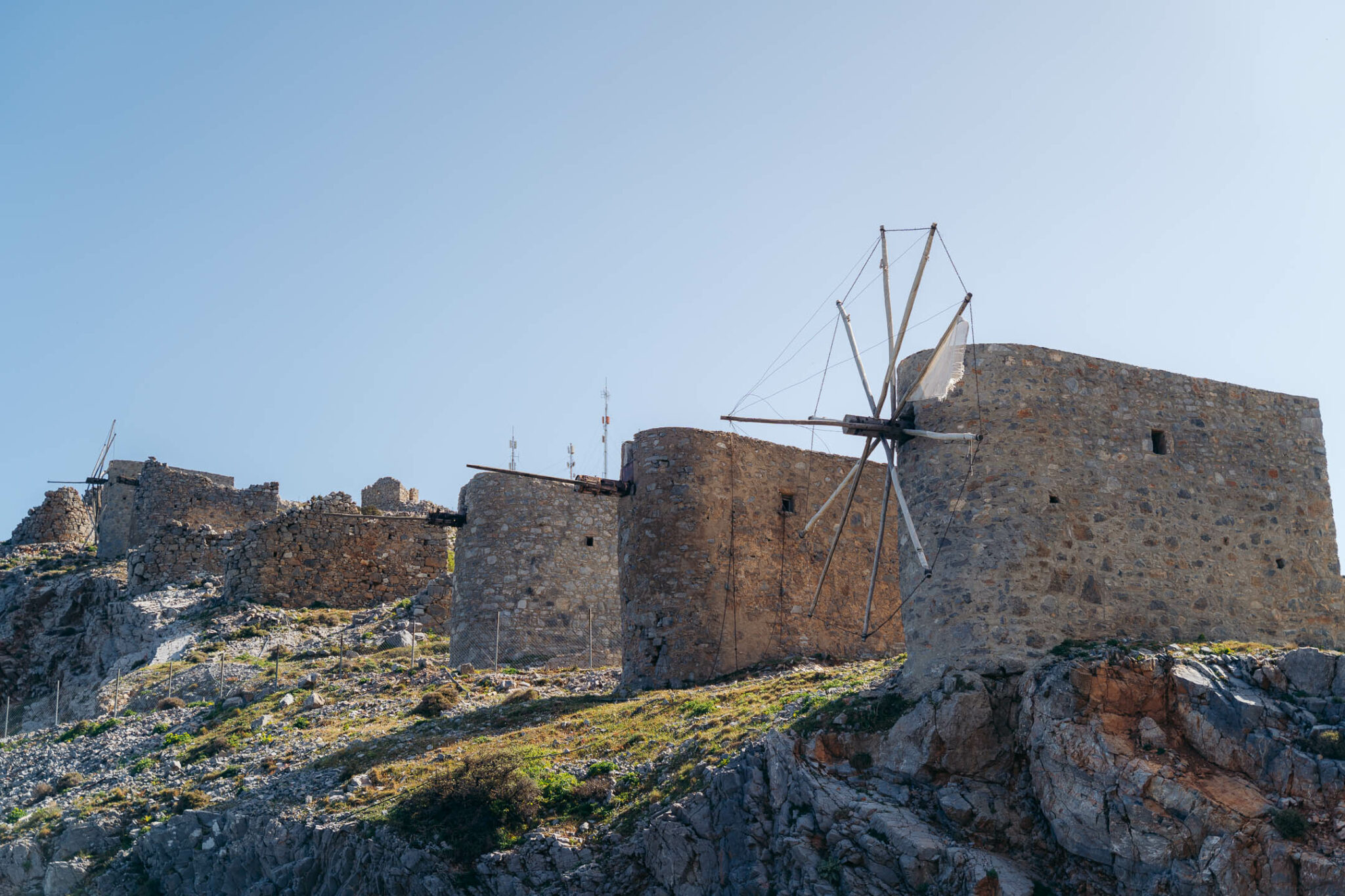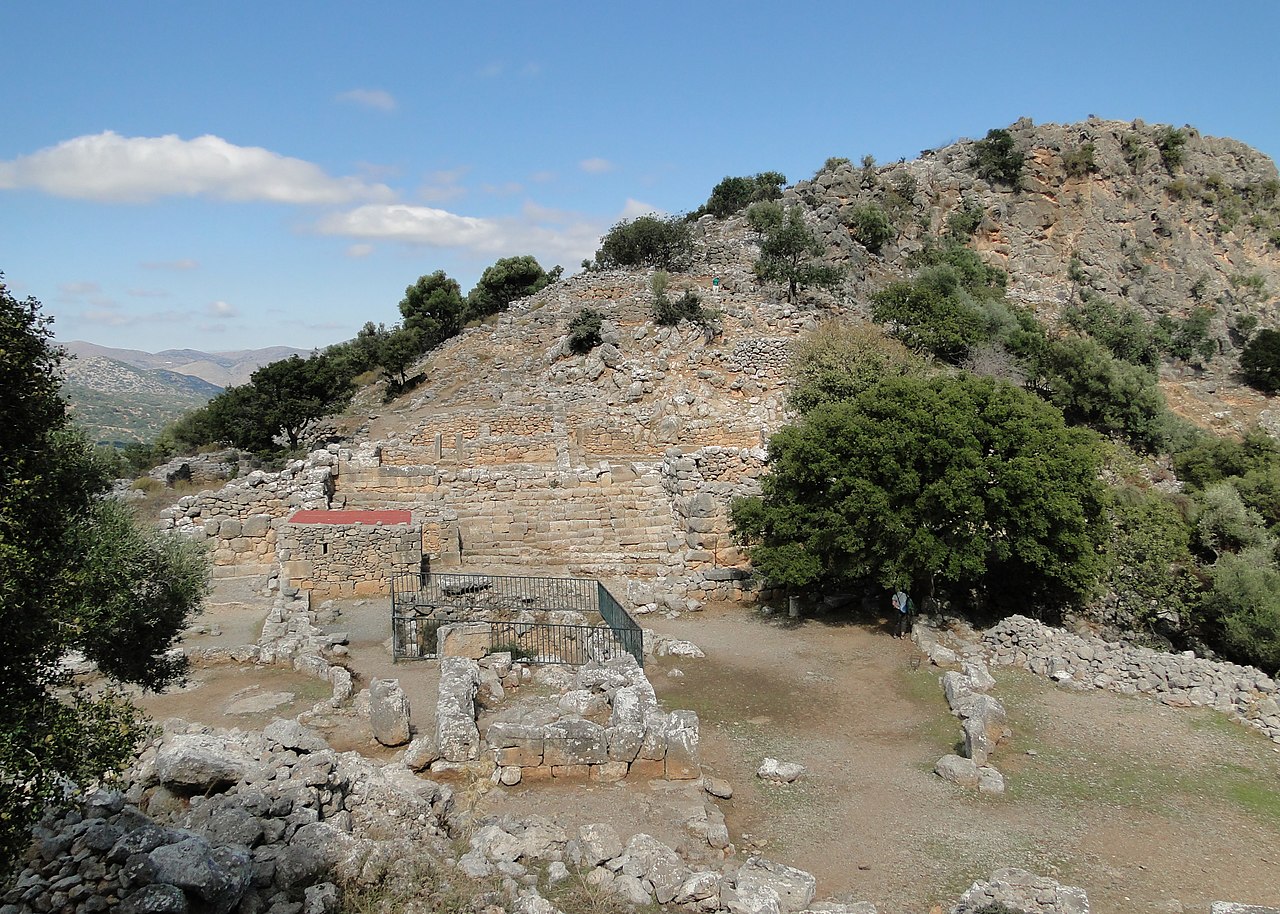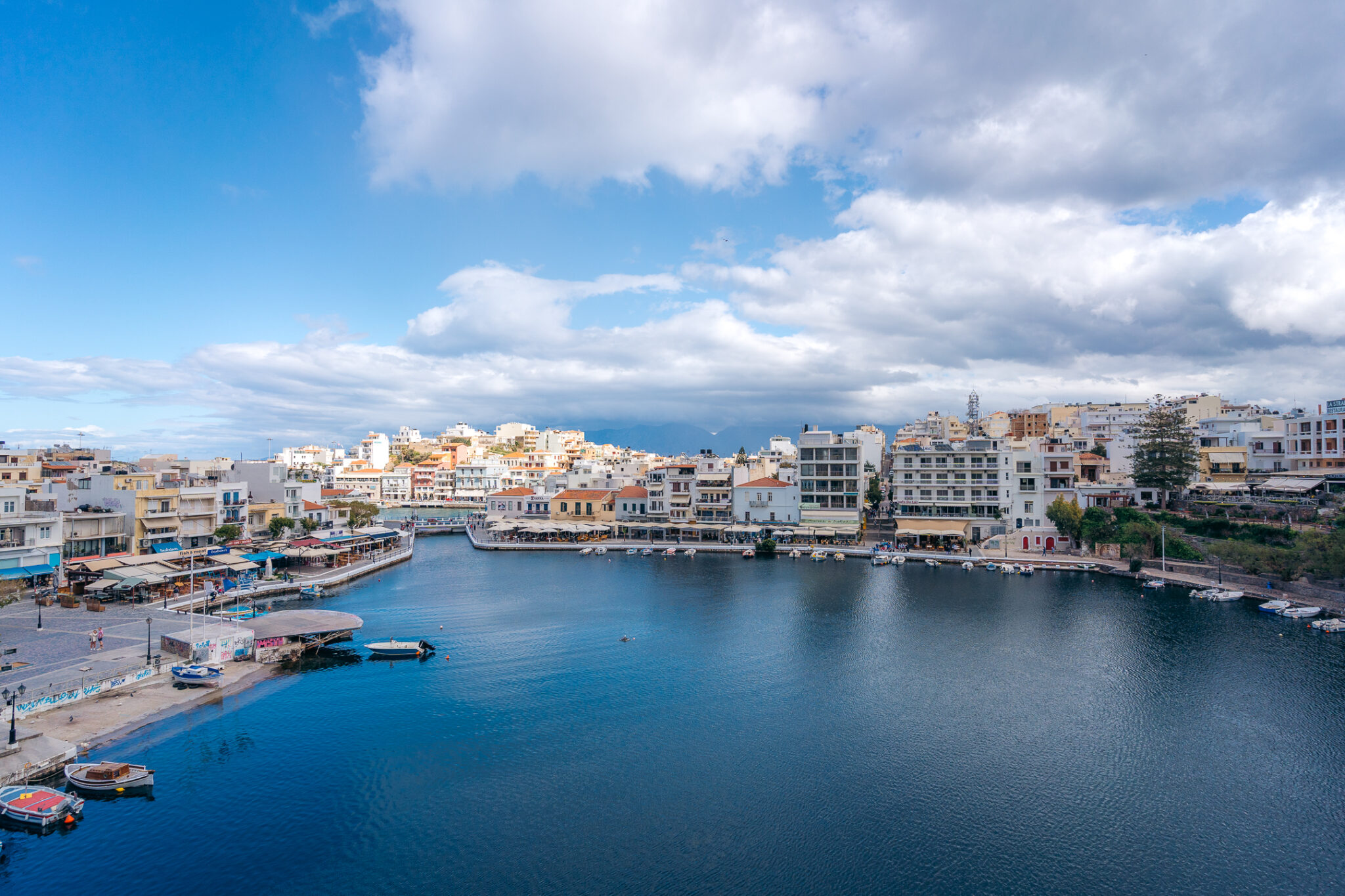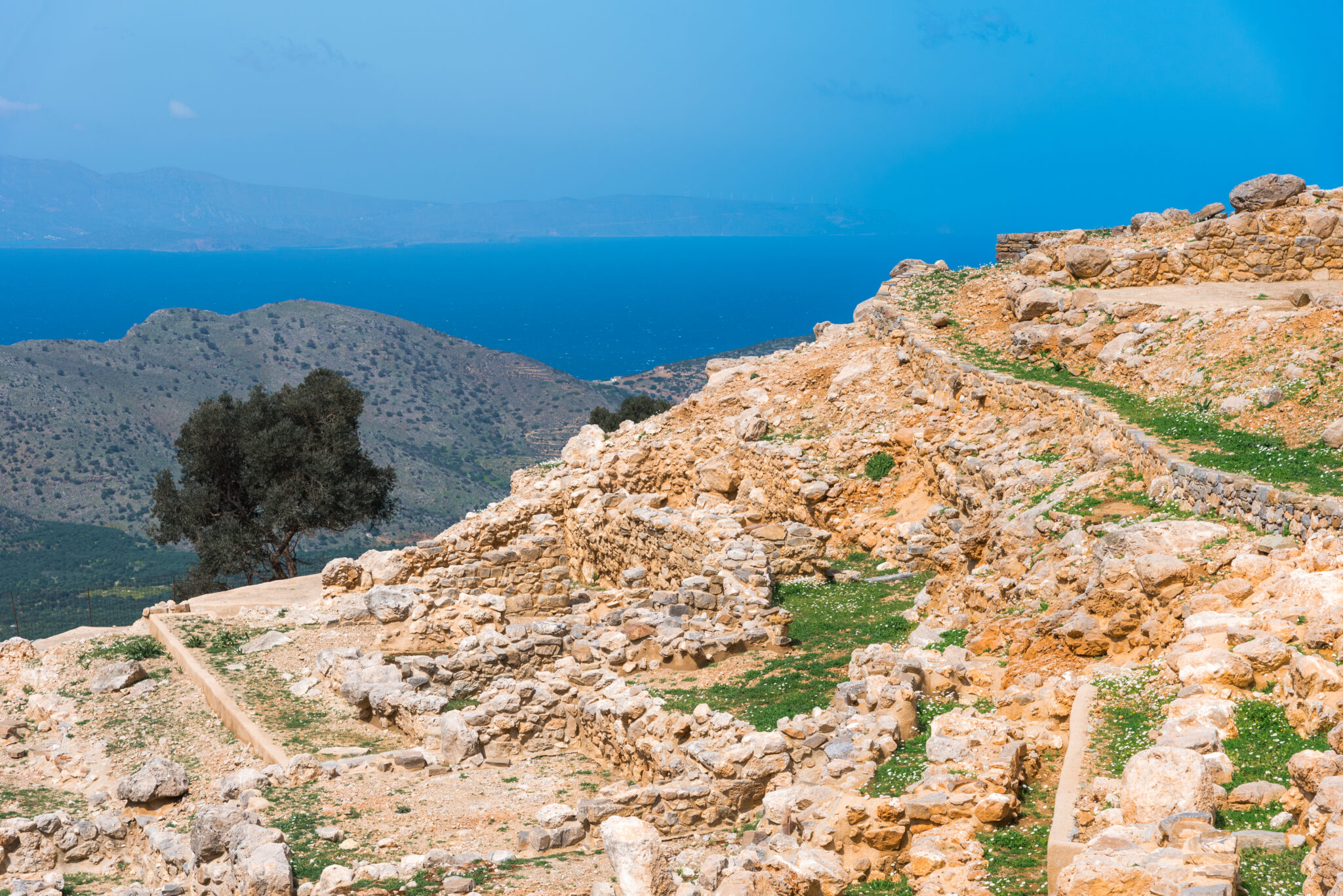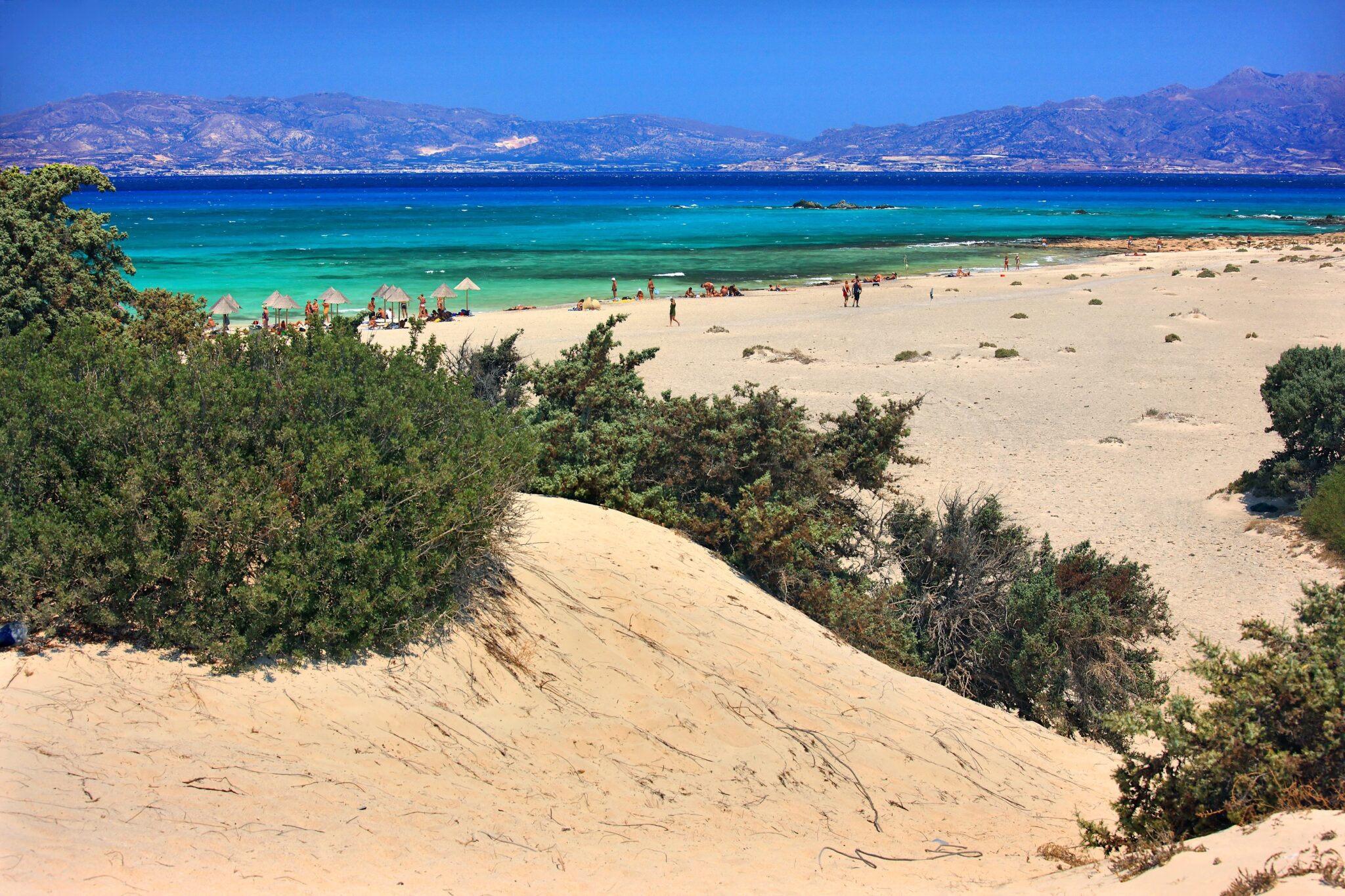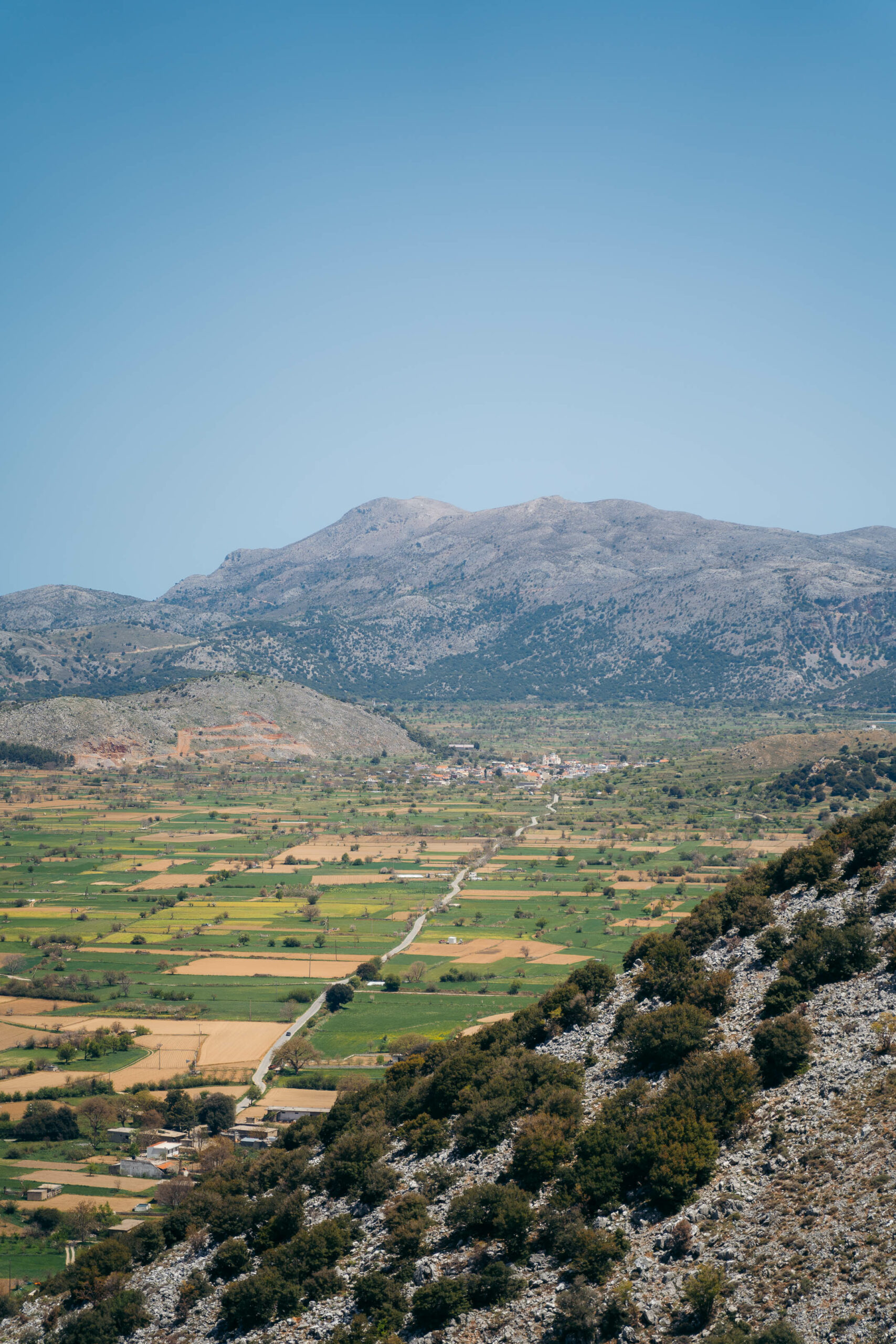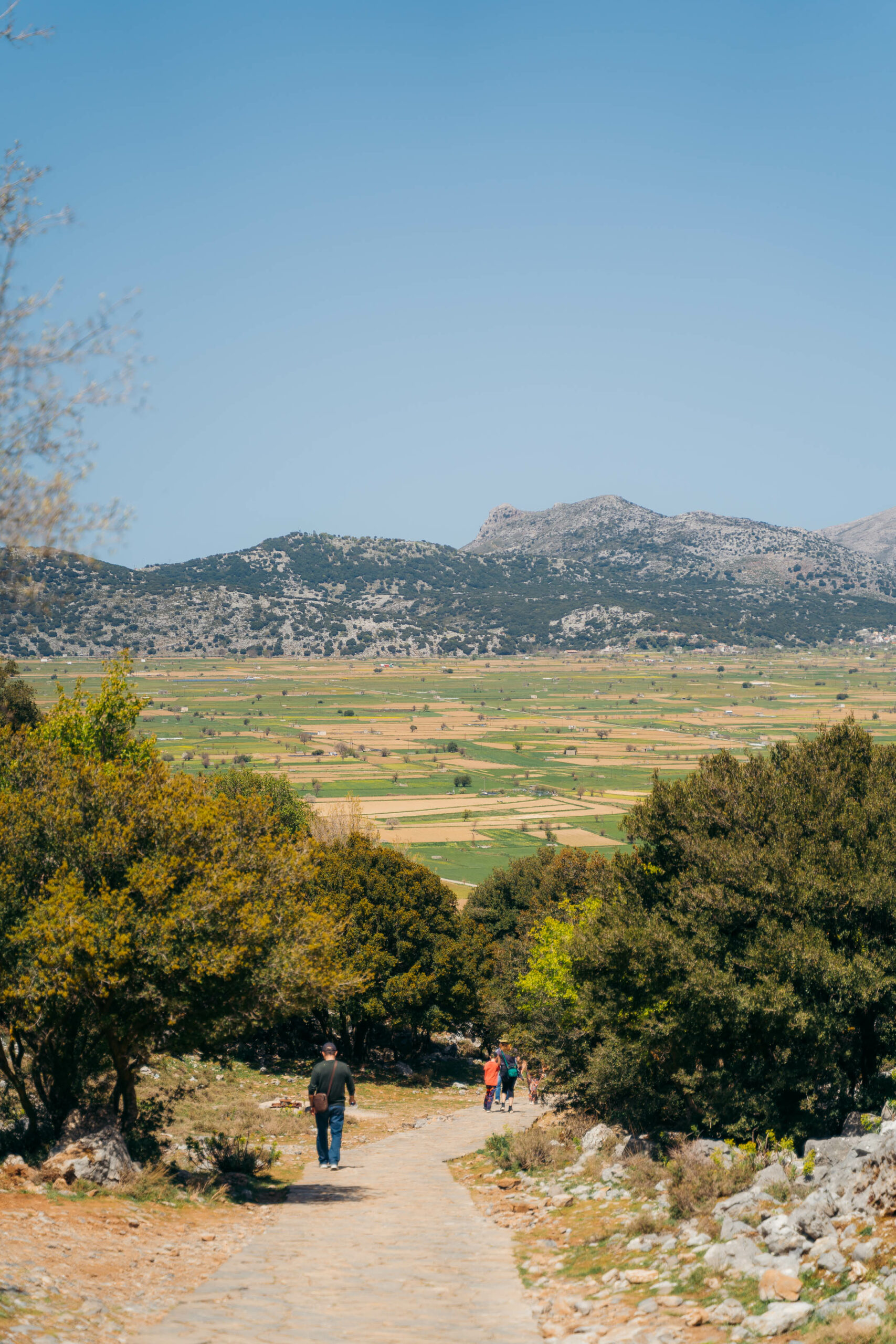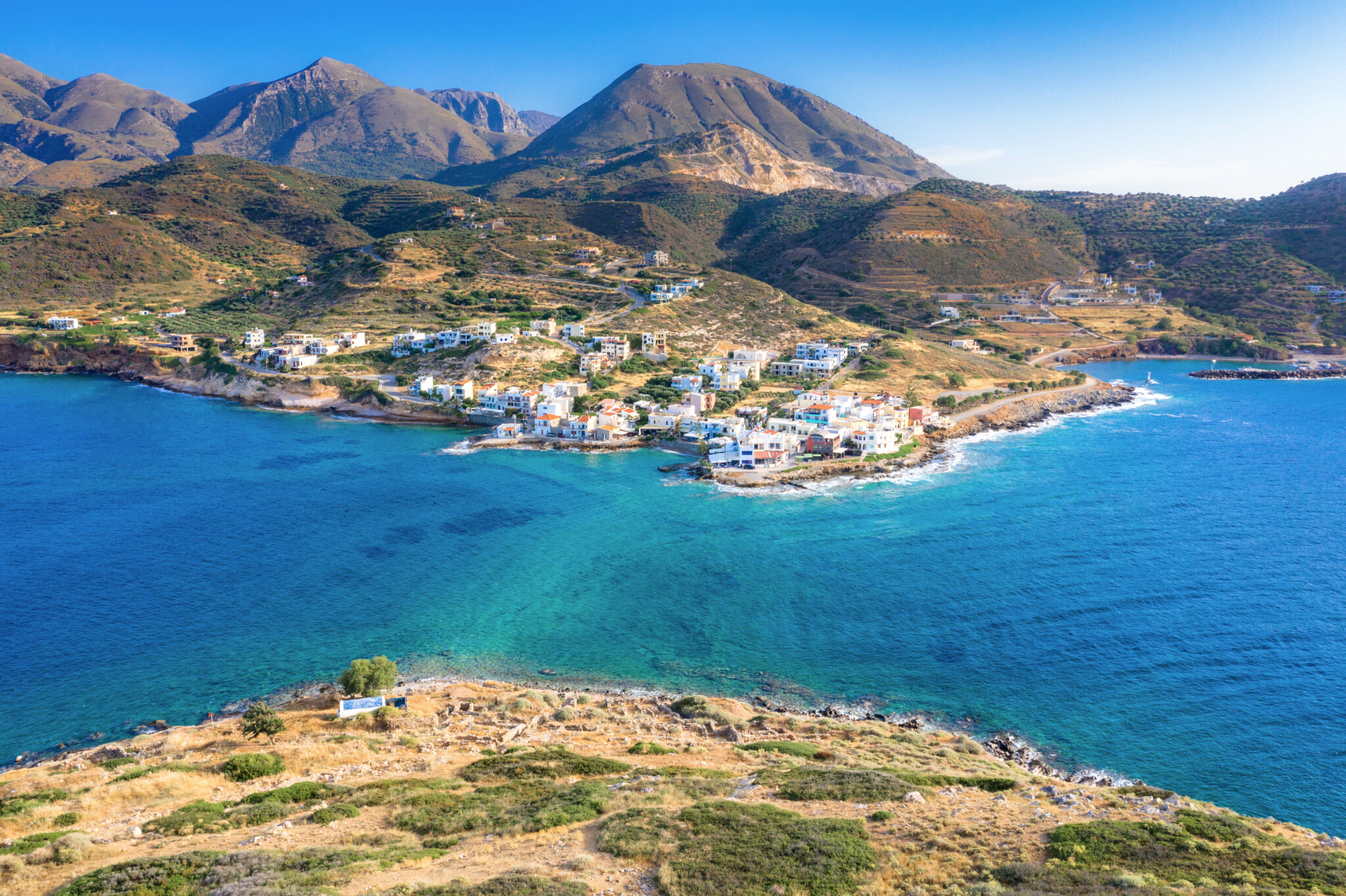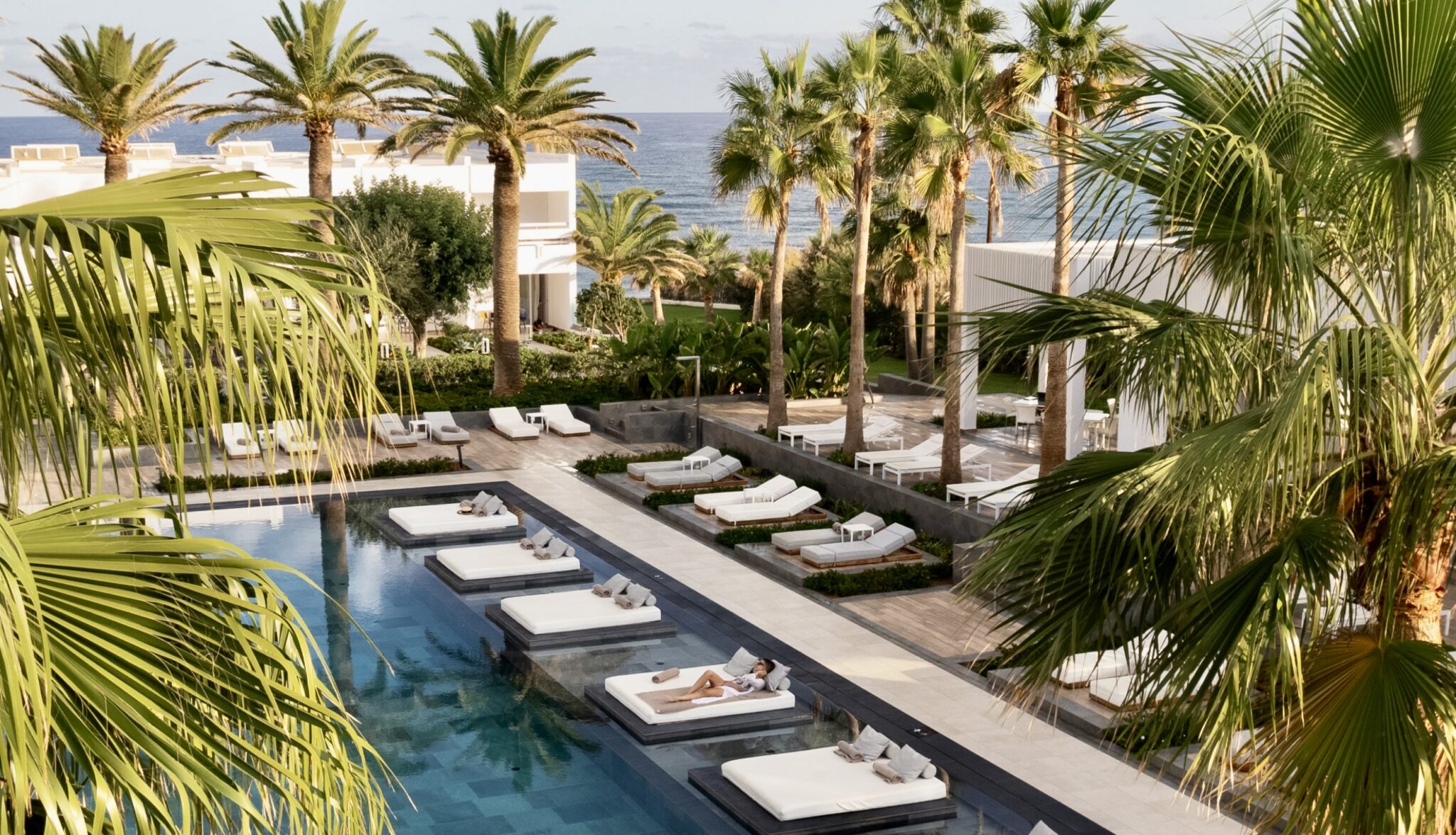The coastal resorts are splendid places to spend precious holiday time, enjoying the laid-back atmosphere and lingering over lazy days by the beach or pool, wandering hidden alleyways on an evening stroll, but the greater area of the prefecture of Lasithi repays exploration in droves. Dreamy desert islands with shining sands and sparkling seas invite, while picturesque plains are circled by traditional villages little changed in decades. Castles and fortresses watch over coastlines ravaged by pirates and invaders, while taverns grill hours-old fresh fish next to bobbing boats in pretty harbours.
Azorias
The late Minoan settlement of Azorias is found on a twin peaked hill southwest of Kavousi, near Ierapetra. Public buildings, storerooms and alleys leading to the central agora have been excavated. The views over the Gulf of Mirabello to the isle of Pseira are stunning.
Today, most visitors come in search of what is thought to be the oldest living olive tree in the world. An essential part of the civilisation of Crete, the olive tree has a history entwined with the economy and tradition of the island. A survivor of countless wars, earthquakes, invasions, and droughts, the tree has been declared a natural monument, the ring dating estimates that the tree was planted in 1350-1100 BC. The neighbouring taverna is also top-notch.
Chrissi island
A 50 minute sail from Ierapetra, Chrissi, also known as Chrysi, is a naturally beautiful island with white sands, clear green seas, and a 300 year old Lebanon cedar forest. Once home to Pirates, today it hosts visitors who disembark at the pier known as Vougious Mati. There is a taverna at the port and the nearest organised beach Chrissi Ammos, or Golden Beach, is an easy 5 minute walk away on the northside of the island. Tinged pink from millions of tiny shells, the beach is organised with umbrellas and a beach bar. If solitude beckons, head west to less trammelled shores. It is forbidden to spend the night on Chrissi and the last ferry back is usually around 17.30.
Lasithi Plateau
850 metres above sea level and surrounded by the looming Dikti mountains, the Lasithi plateau is one of the most fertile lands in Crete. 18 villages devoted to agriculture are dotted over the plain alongside hundreds of small white windmills essential for irrigating the fields and providing water for stock animals. In winter, heavy snowfalls often make the area inaccessible but the first weeks of spring are magical with wildflowers and herbs carpeting the orchards and olive groves. The Cave of Psychro is a popular destination, and many stop in the nearby villages of Tzermiado and Agios Giorgios to see rural Cretan life and sample the wonderful local produce in traditional taverns.
Makrigialos
At the end of the southern Lasithi coastline, a small fishing village has grown into a charming low-key resort surrounded by numerous appealing beaches. Swallowing up neighbouring Analipsi, the town stretches out along the coastal road, while to the west there is a small harbour lined with tavernas. The main beach is over a kilometre long, sandy with a shallow seabed that makes you think you could walk the two hundred nautical miles to Africa. Ideal for families, the town works well as a base for exploring the southern coast beaches stretching from Ferma to Goudouras, the local mountain villages and the lush canyons and gorges nearby.
Mochlos
A forty five minute drive from Agios Nikolaos, Mochlos is a seaside village that retains a rural character and lifestyle. Long famed for its tavernas by the sea, the village overlooks an island of the same name which was home to an early Minoan settlement of some size. Today, it is a pint sized resort with a handful of shops, restaurants and hotels. Low-key, Mochlos is ideal for languid days by the sea or as a base for exploring the surrounding area. In front of the village is a small sand and pebble beach with basic amenities, while 400 metres west is Limenaria, the local harbour well sheltered from the waves. The rocky seabed around Mochlos is a haven for sea urchins so do take care when entering the water, or better still wear water shoes.
Sissi
Hidden away at the end of a twisting road off the national highway, at first sight Sissi is a disappointing haphazard mix of rental rooms, tourist shops and fast-food joints. Delve deeper, however, and the town’s charms become apparent; the harbour burrows deep into the land and colourful fishing boats bob in the clear water, backed by towering mountains. Narrow winding streets are shaded by Bouganvillea, and there are small sandy beaches around the town, while to the east are the popular organised beaches of Boufos and Avlaki. The fish taverns are renowned throughout Crete as some of the best and 15 minutes east is the village of Milatos, home to storied caves on a hill with thrilling views.
Read also:
Agios Nikolaos, cosmopolitan Cretan destination
Oropedio Lasithiou: A special route to the most authentic part of mountainous Crete
Vamos: The Cretan Village where Time stands Still



